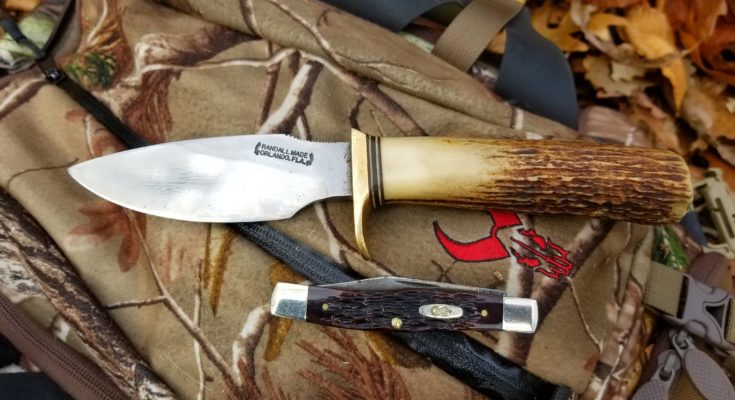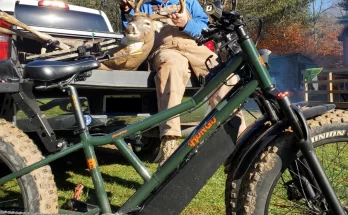A hunting knife is one of the main accessories of every hunter and even though you might not plan on using it often, it comes handy more than you’d admit. But how to sharpen a hunting knife and why is it important?
That is just a couple of questions which will be answered in this post – and whether you’re a new hunter or you’re just looking to get your old hunting knife in shape, this is the right post for you.
But even before jumping into the sharpening process, let us quickly remind you of the benefits of a hunting knife and why every hunter should have at least one!
Why is a Sharp Hunting Knife a Must-Have Accessory?
If you’ve ever tried using a dull knife, you’d remember the amount of force you had to use in order to accomplish anything.
But even though you might be willing to put enough effort into using a dull knife, you might not be doing yourself a favor.
Sharp knives require less brute force and this means that you will be leaving less damage to the food. If you have ever had a look at the cut, you would be able to easily tell a clean cut made by a sharp knife or a cut that left quite significant damage due to its dull blade.
Knives might be one of the most used hunting accessories, but there is one main rule – always keep it sharp.
A dull knife requires more force and pressure which can cause slip up and accident. The last thing you want to happen is putting your hands in danger.
How to Sharpen a Hunting Knife
Before you put yourself to work and sharpen your knife, there is are a couple of things you should know.
The most important thing is that there are 3 sharpening stages. Sometimes, your knife will have to go through all 3 stages. On the other hand, sometimes your knife will only require a second or third stage.
The sharpening process is considered very simple since it a two-way process: grinding and honing. Grinding is a way to remove the metal while honing is a precision abrasion process where a very small amount of material is removed from the surface.
Note: The process down below is suitable only for straight & non-serrated knives.
Stage 1

Stage 1 is also known as a rough cut stage where you have to remove inconsistencies in the blade. This is a heavy sharpening stage which should be done only in case of having a nicked and inconsistent edges on your hunting knife (or extremely dull blades).
Here, you have to take the edge of the blade from U to sharp V shape.
To do so, you should angle the blade somewhere between 13 and 16 degrees from the coarse grit sharpener. We recommend doing about 5 strokes on each side of the blade.
When stroking the blade across the sharpener – make sure to do even control under the correct angle.
Stage 2
Stage 2 is a medium to final sharpening stage which is suitable for dull blades, quick touch-ups and even final sharpening (for some knives).
Once completing stage 1 sharpening, you should wipe your knife dry, but be careful about the blade.
In this stage, you will work on sharpening dull blades and removing rough scratches.
We recommend using honing fluid but diamond sharpener you require in this stage can be used both dry and wet. In this stage, you will do what you’ve previously done in Stage 1, yet with a different sharpener.
What most hunters don’t know is that you can achieve a great sharpness at Stage 2 without having to go to Stage 3. Therefore, work the edge and fine-tune it to smooth out the sharpening scratches.
Or you can always go to Stage 3 if you don’t trust your skills enough.
Stage 3
Stage 3 is ideal for fine sharpening where you are shaving the edge using natural stone or fine grit sharpener.
However, keep in mind, if you use a natural stone – you are supposed to use it wet. You will also be doing the same strokes you’ve done in Stage 1.
Only in this step, you should use lighter side-to-side strokes and repeat it several times.
How to Sharpen Serrated Hunting Blades?

Serrated blades have the ability to hold their sharpness for a lot longer than straight-edged blades. But once they get dull, they’re a lot harder to sharpen.
Therefore, choosing a tapered or cylindrical fine diamond steel or ceramic sharpener is a must for this job.
You might not be happy to find out, but you will have to sharpen each serration individually. However, you will only be sharpening the blade from one side.
It should not take more than 5 to 8 strokes to resharpen (as long as the angle is correct), but you should ensure that you only maintain the ramp of the serration from edge to edge.
You shouldn’t create an edge bevel. To prevent this from happening – here’s a trick that could help. Grab a pen and paint the serration that has to be sharpened. Then after following your process, check whether you’re removing all black. This will let you know whether your sharpening is consistent or not.
We highly recommend you rotating and spinning the sharpener throughout the process for the most consistent sharpening.
Conclusion
A sharp knife is considered to be dangerous, but believe it – a sharp knife is a safe knife where the dull knife is actually more dangerous than a sharp knife.
You shouldn’t compensate for a dull edge by applying more force as this doesn’t leave a clean-cut and could lead to injuries.
Instead, if your knife has a very dull edge – start at Stage 1. However, if your knife needs just a little improvement when it comes to the blade sharpness – feel free to start right with the Stage 2.
In case your hunting knife needs just a finish touch – Stage 3 is the most suitable stage to start at.
We hope this helped you to learn how to sharpen your hunting knife, but also the benefits of a sharp knife which you shouldn’t forget – especially when you’re going on a hunting trip!
Cover photo from Flickr by fishiker






